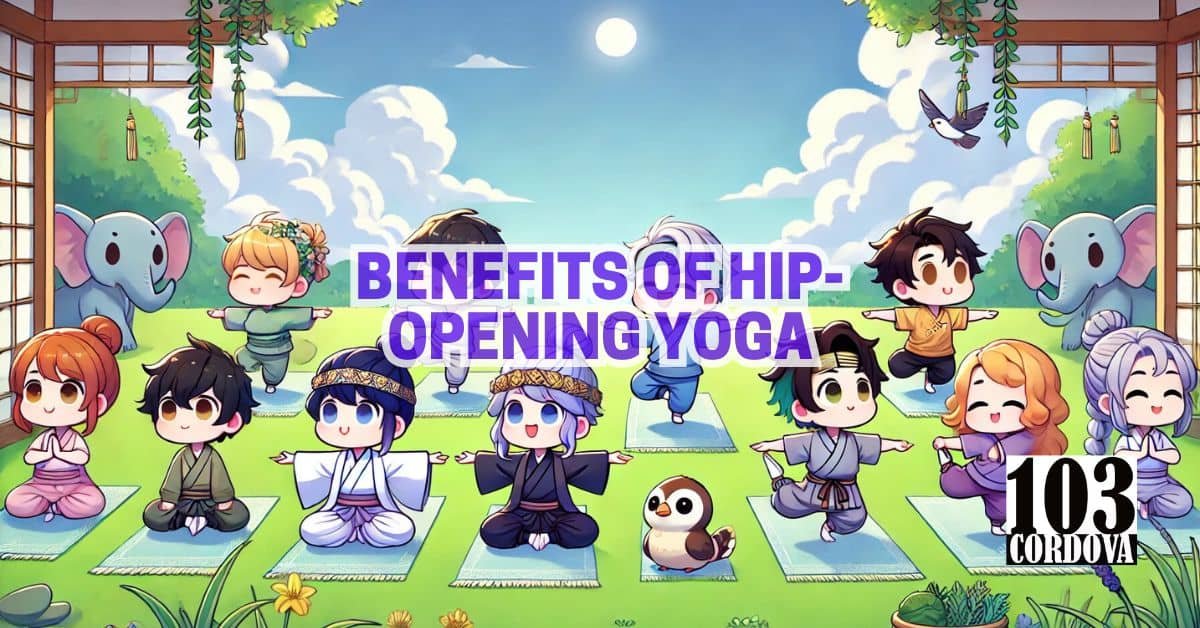Hip-opening yoga is an effective way to improve flexibility, mobility, and overall comfort in daily activities.
For beginners, it can seem intimidating, but breaking the process into easy-to-follow steps can make it more approachable and enjoyable.
Hip opening poses help release stored tension, which can enhance both physical and emotional well-being.
This type of yoga also improves circulation in the lower body, which may reduce pain or stiffness.
We’ll walk you through practical tips and specific techniques to help you experience the full benefits of hip-opening yoga.
1. Why Hip-Opening Yoga Is Essential for Flexibility and Mobility
Hip opening yoga helps release tension in the hip area, leading to greater flexibility and an improved range of motion.
Tight hips can restrict movement and lead to lower back pain, but practicing these poses can alleviate discomfort.
Enhanced hip mobility promotes better posture and supports overall body alignment.
By stretching and opening the muscles surrounding the hips, you can move more freely during both workouts and daily tasks.
The increased flexibility gained from hip-opening yoga can also aid in injury prevention by keeping the muscles pliable and adaptable.
🧘 The Life-Changing Benefits of Postnatal Yoga for New Moms
2. Starting with Basic Hip-Opening Poses for Beginners
Beginners should start with simple poses to allow their bodies to get used to hip stretching.
Poses like Butterfly (Baddha Konasana), Child’s Pose (Balasana), and Low Lunge (Anjaneyasana) are excellent starting points.
These poses are gentle yet effective at gradually loosening the tight muscles around the hips.
It is important to hold each pose for at least 30 seconds to allow the muscles to release tension slowly.
Taking it slow and steady in these foundational poses will set the stage for more advanced stretches in the future.
🧘 The Life-Changing Benefits of Yoga Teacher Training: Why You Should Consider It
3. The Importance of Warming Up Before Hip-Opening Poses
Warming up before hip opening poses is crucial to prevent injuries.
Gentle stretches like Cat-Cow (Marjaryasana-Bitilasana) or light jogging in place can help prepare the hips.
A properly warmed body will be more receptive to deeper stretches, helping you practice safely.
A warm-up increases blood flow to the muscles, making them more elastic and less prone to strain.
Spending 5-10 minutes warming up ensures that your body is ready to perform and benefits fully from hip opening exercises.
🧘 The Positive Impact of Yoga Classes for 11-Year-Olds on Mental and Physical Health
4. Maintaining Proper Alignment and Posture in Hip-Opening Poses
Maintaining proper alignment is key to experiencing the full benefits of hip-opening yoga.
Incorrect posture can lead to injuries and slow progress.
Keep your spine straight, avoid overstressing your knees, and maintain controlled movements to maximize effectiveness and safety.
For example, in low lunge (Anjaneyasana), make sure the front knee is directly above the ankle to protect your joints.
Paying close attention to your alignment ensures that you target the correct muscles and make progress without causing unnecessary harm.
🧘 Can I Do Yoga and Exercise Together? How to Create a Complementary Fitness Plan
5. Understanding Your Hips’ Range of Motion and Avoiding Overstretching
Your hips have a natural range of motion, and understanding your limits is essential to avoid injury.
Overstretching can damage ligaments and muscles, setting you back in your practice.
Always listen to your body, and stop if you experience sharp or uncomfortable pain.
Progress should feel challenging but not painful, so work within your limits to prevent overstretching.
Gradually, you’ll be able to extend your range of motion without putting your body at risk.
🧘 Is Yoga Teacher Training Worth It if You’re Not Planning to Teach?
6. How to Use Props for Support in Hip-Opening Yoga
Props like blocks, straps, and bolsters can be very helpful for beginners.
Blocks bring the floor closer, straps extend your reach, and bolsters provide added comfort for deep relaxation.
Using props allows you to practice poses comfortably and reduces unnecessary strain on your body.
In poses like the pigeon pose (Eka Pada Rajakapotasana), placing a block under the hip can help you stay balanced and prevent overextension.
Props can also help you hold poses for longer, allowing your muscles time to fully relax and open.
🧘 Do Yoga or Practice Yoga: Why Some People Say It Differently
7. Breathing Techniques to Deepen Your Hip-Opening Stretches
Deep, steady breathing is crucial for holding hip opening poses effectively.
Diaphragmatic breathing, or belly breathing, helps relax the muscles and open the hips more effectively.
Inhale to lengthen the spine, and exhale to soften into the pose for a deeper stretch.
Focusing on your breath also helps calm the mind, which is important when dealing with areas of the body that tend to hold tension.
Breathing slowly can transform a challenging stretch into a more meditative, mindful experience.
🧘 Kriya Yoga Vs. Kundalini Yoga: Understanding the Key Differences Between These Two Practices
8. Why Consistency Is Key to Experiencing the Benefits of Hip-Opening Yoga
Consistency is the most important factor for experiencing the full benefits of hip-opening yoga.
Regular practice improves flexibility, reduces tension, and helps poses feel more comfortable over time.
Aim to include hip opening stretches at least three times a week to see noticeable improvements.
Like any skill, progress comes from regular repetition and commitment, and the more often you practice, the more natural the poses will feel.
Consistent effort will eventually lead to better posture, less pain, and greater freedom of movement.
🧘 Surprising Benefits of Gomukhasana Yoga for Your Health
9. Being Patient and Gentle: Progressing Gradually in Hip-Opening Yoga
Patience is essential when progressing in hip-opening yoga.
Forcing your hips open too quickly can lead to frustration and injury.
Be gentle with your body and celebrate small improvements—over time, your hips will naturally open as you continue practicing.
It’s normal for some poses to take weeks or even months to feel comfortable, especially if your hips are particularly tight.
Remember that progress may be slow, but it is real, and even small gains will lead to big changes over time.
10. Finish Your Practice with Relaxation Poses for Optimal Results
Ending your practice with relaxation poses like Supine Bound Angle Pose (Supta Baddha Konasana) can help your body settle and release any lingering tension.
These poses allow your body to absorb the benefits of your practice, leaving you feeling relaxed and more comfortable.
Relaxation poses a signal to your nervous system that it’s time to rest and recover.
They also help restore balance in your body after deeper stretching.
Spending a few minutes in a resting pose is the perfect way to conclude your yoga session.
🧘 103 Cordova Yoga Studio Marikina City
💡 Conclusion
Experiencing the full benefits of hip opening yoga takes time, dedication, and consistency.
As a beginner, focus on maintaining proper alignment, using props, and practicing deep breathing.
Remember that everyone’s journey is personal, and each small improvement brings you closer to a more flexible, mobile, and relaxed body.
The journey to open hips is not about perfection but about progress.
Be kind to yourself, and enjoy the process of becoming more connected with your body.
🧘 Our Services
Transform your body and mind with our yoga classes for all ages at 103 Cordova Tower, Marquinton Residences, Cirma Street, Sto. Nino, Marikina City.
Whether you’re a beginner or experienced, our expert instructors tailor sessions to your unique needs, creating a welcoming and enriching environment.
Rejuvenate your spirit, improve flexibility, and build strength in every class designed for all fitness levels.
Contact us today at 09176225780, message us on Facebook, or reach out through our site’s contact form to start your yoga journey.
Discover a healthier, more balanced you—right in the heart of Marikina!

